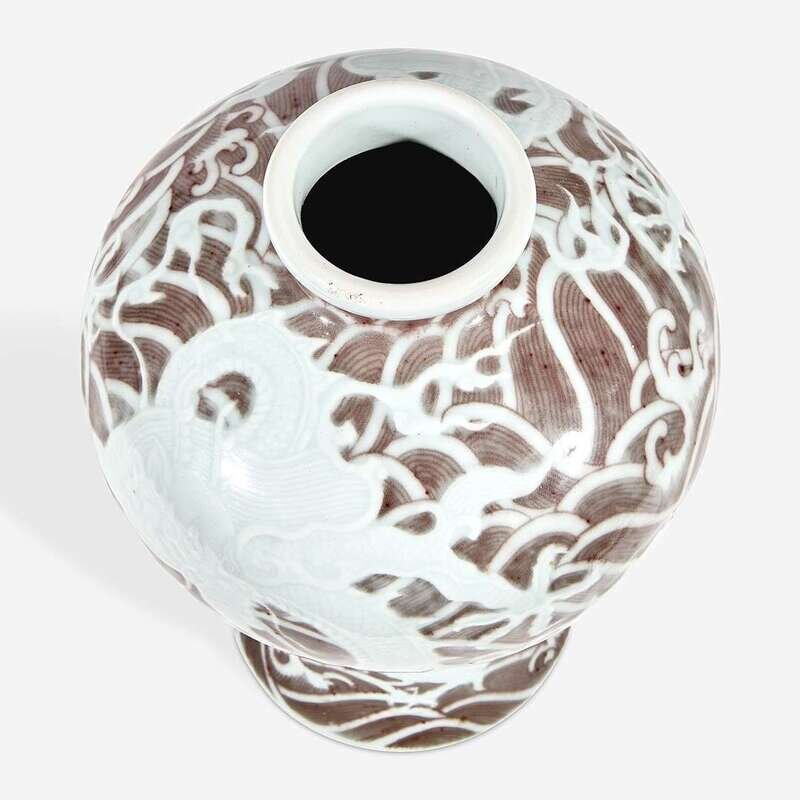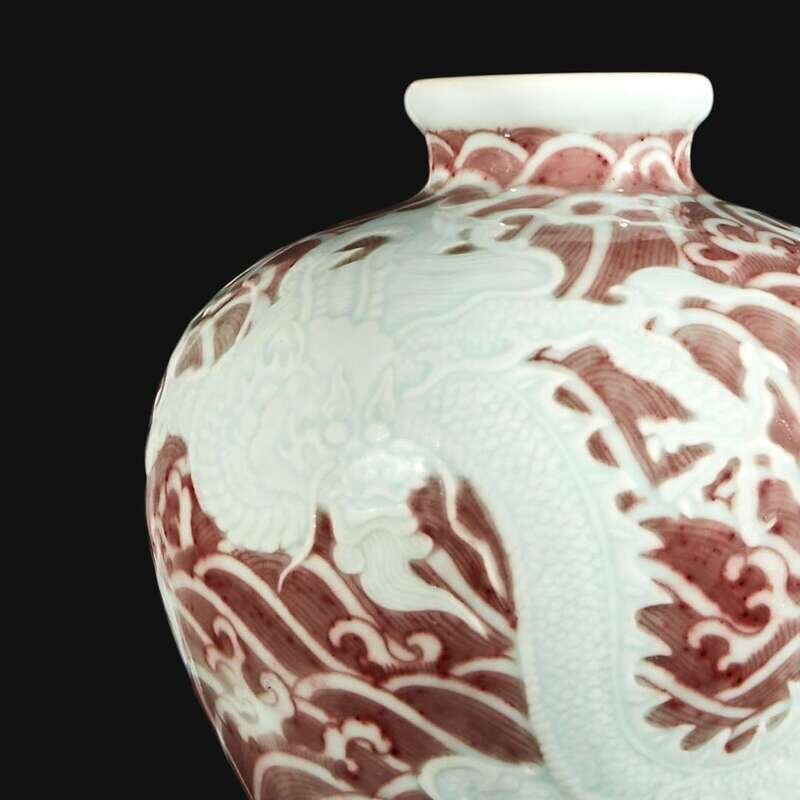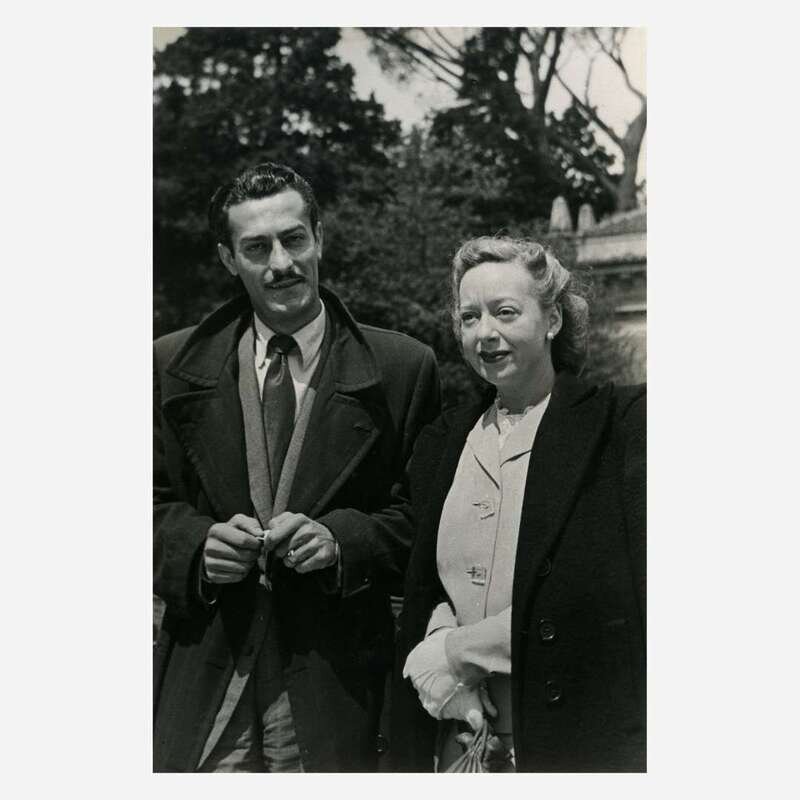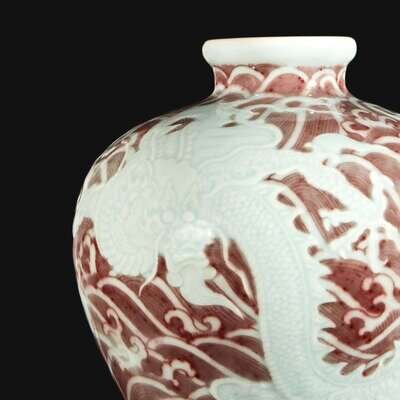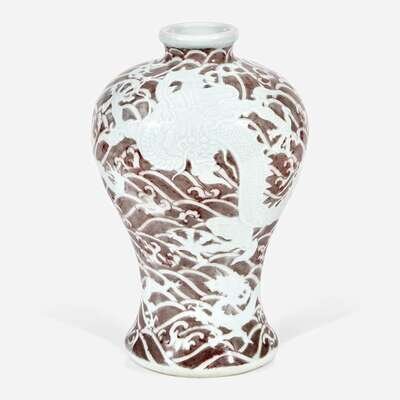Condition Report
Contact Information
Lot 12
A Chinese carved and underglaze red "Dragons and Waves" vase, Meiping Yongzheng six-character mark and of the period
Sale 5887 - Asian Arts
Apr 8, 2021
6:00AM ET
Live / Philadelphia
Own a similar item?
Estimate
$150,000 -
250,000
Price Realized
$2,316,000
Sold prices are inclusive of Buyer’s Premium
Lot Description
A Chinese carved and underglaze red "Dragons and Waves" vase, Meiping Yongzheng six-character mark and of the period
***PLEASE NOTE, THIS IS A PREMIUM LOT. A DEPOSIT IS REQUIRED TO PARTICIPATE IN BIDDING ON THIS LOT. PLEASE CONTACT CLIENT SERVICES FOR FURTHER DETAILS.***
Of robust form with swelling shoulder, short cylindrical neck and flared lip and foot, the shoulder carved in low relief with two dramatic sinuous five-clawed dragons, above a smaller pair of incised dragons at the foot, all depicted against stylized crashing wave in underglaze red, a pale blue tint to the glaze, underside with six-character mark within a double circle.
H: 11 1/8 in.



